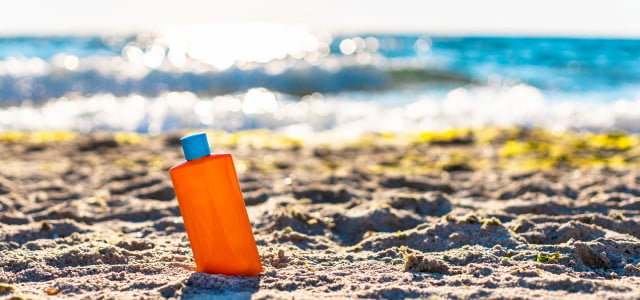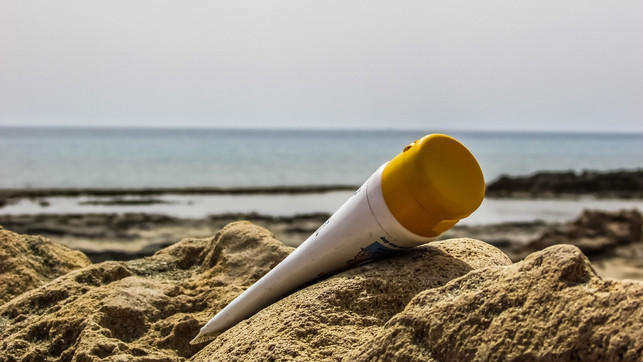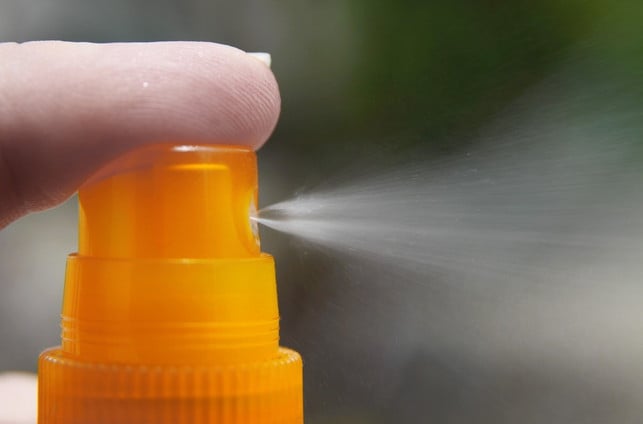
The particularly high sun protection factor of the so-called “Sunblocker” weighs in false security: no sunscreen holds all UV rays. You can find out which additional sun protection measures you should take here.
There are sunscreen like sand by the sea – which of them is probably the most reliable product? Consumer: Inside who ask themselves this question could assume that it is the means advertised as a “sunblocker”. Finally, this term gives the impression of complete protection: “Sunblocker” sounds as if the product would not let harmful UV rays through the skin. But that’s a deceptive assumption.
“Sunblocker”: No complete protection through sunscreen

The Federal Office for Radiation Protection (BFS) also warns even sunscreen with a very high sun protection factor and designated UVB and UVA protection. Even with a supposed “sunblocker”, some of the UV rays still penetrate the skin.
Sun cream works thanks to mineral and/or chemical UV filters:
-
Mineral filters form a physical barrier that reflects or scattered the UV rays.
-
Chemical filters swallow the UV rays and release the energy absorbed in this way as heat.
Based on the light protection factor (LSF) specified on the packaging, you can see how much these UV filters protect you or how much they extend the natural self-protection of your skin.
The following applies: the higher the sun protection factor, the higher the protection – but creams with LSF 50+ cannot also block the entire radiation. According to the Helmholtz Society, two percent of the UV radiation still leave them on the skin, i.e. a fifty-. With a product with LSF 15, it is seven percent: a fifteenth.
Also important to know that the protection specified on the packaging is only guaranteed if you pay attention to applying sunscreen correctly. Frequent errors when using sunscreens are, for example, that you use too little of the product and fail to regularly cream.
How sun protection can be declared

It is a widespread misunderstanding that sunscreen no longer let UV rays through. That is why the EU already banned advertising statements such as “Sunblocker” or “complete protection” in 2007. The labeling of sunscreen has been standardized since then:
The protection is classified as a “base” (LSF six to 10), “medium” (LSF 15, 20 or 25), “high” (LSF 30 and 50) and “very high” (LSF 50+).
There is also a standardized UVA seal that shows products whose UV filters can ensure at least a third of the UVA protection. This is important because the sun protection factor mainly refers to UVB radiation (which causes sunburn), but not to UVA radiation (which is an important risk factor for skin cancer and skin aging).
You can find more important information about sunscreen in our guides:
- 5 sunscreen rules: How useful are they?
- Organic sunscreen: effective protection without risk?
- Make sunscreen yourself: why this is not a good idea
How you can protect yourself from the sun
Although there is no longer any sunscreen advertised as a “sunblocker”, products with LSF 50+ and UVA/UVB protection can also weigh you in false security. Be aware that sunscreen should always be a sun protection measure of several.
The BFS calls other important sun protection rules:
-
Avoid the sun when it has reached its peak at lunchtime. At this point, the UV index is highest. Laying activities that take place outside, if possible to the morning or evening.
-
Cover your skin with clothing, including headgear and closed footwear.
- When bathing, you should protect shoulders, chest and back with a T-shirt from UV radiation. Water reflects the UV radiation and thereby reinforces its effect.
- Wear sunglasses with designated UV-400 protection.
-
You shouldn’t expose infants to the blazing sun.
More information about the right sun protection for children:
- Sunscreen for children in the test: All test winners 2020 to 2023
- UV protective clothing: The more environmentally friendly sun protection?
Read more on utopia.de:
- Sunscreen whitles: tips against it and why this is so
- Old sunscreen: Can you still use the cream from the previous year?
- Snow blindness: prevention and treatment of sunburn in the eyes
** marked with ** or orange underlined Links to sources of supply are partially partner links: If you buy here, you will actively support Techzle\.com, because we will then receive a small part of the sales proceeds. More information.